11 ways new technology changed the way we think about Ancient Egyptian mummies
Marianne Guenot

- Technology has revolutionized the way we see Ancient Egyptian mummies.
- With 3D CT scans, Egyptologists can see the remains in unprecedented detail without ever unwrapping them
Advances in technology are allowing Egyptologists to see mummified remains in unprecedented detail, without having to unwrap them
3D CT scanning has been around for decades, but recent advances in image quality allowed researchers to show Ancient Egyptian mummies like never before.
Here are 11 ways the technology provided new insight:
Scientists peered into the mummified eyes of Pharoah Amenhotep I.
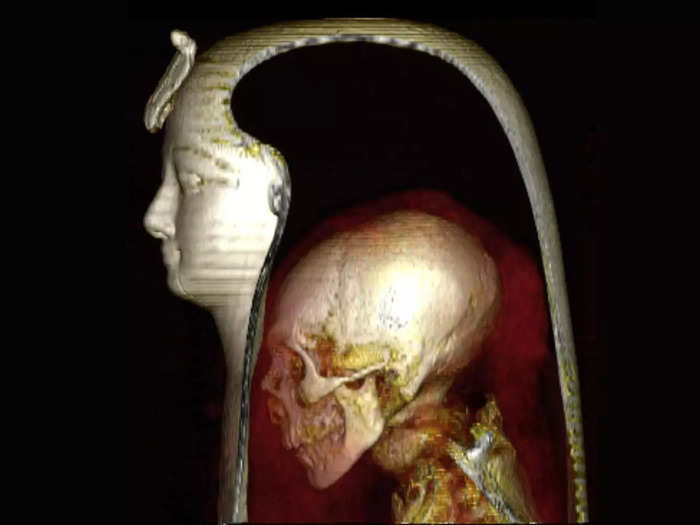
A study published in late 2021 revealed the results of the first-ever 3D CT scan of the 3,500-year-old royal mummy of pharaoh Amenhotep I.
The technology used 3D CT scanning to provide a digital recreation of the remains in incredible detail.
We now know 'more or less' what Amenhotep looked like.
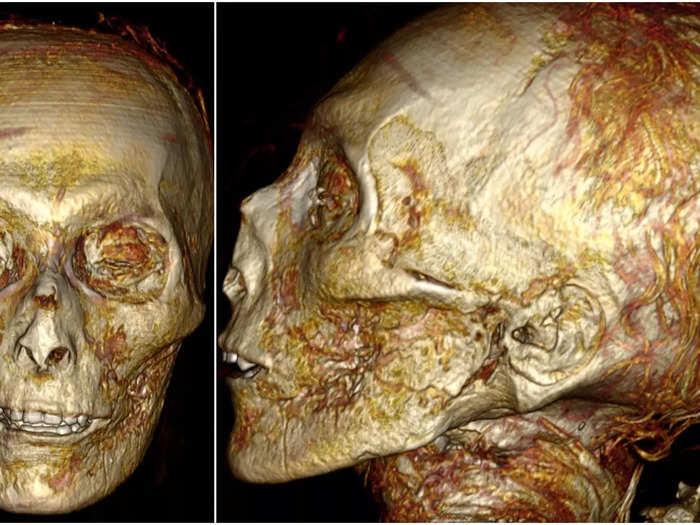
The technology allowed scientists to see Amenhotep I's face, including the delicate, wispy hair on the back of his head.
Now "we know more or less what he looked like," said Wojciech Ejsmond, an Egyptologist from the Warsaw Mummy Project who was not involved in that work.
The study found he had a narrow chin, a small narrow nose, curly hair, mildly protruding upper teeth, and a pierced left ear.
This amount of detail would have been very difficult to preserve if the mummy had been unwrapped.
The soft tissue can easily crack or stick to the bandages, Ejsmond said, destroying the delicate details forever.
"When you are unwrapping, you are destroying the structure that was holding the mummy together for thousands of years."
He was buried with amulets and jewels.
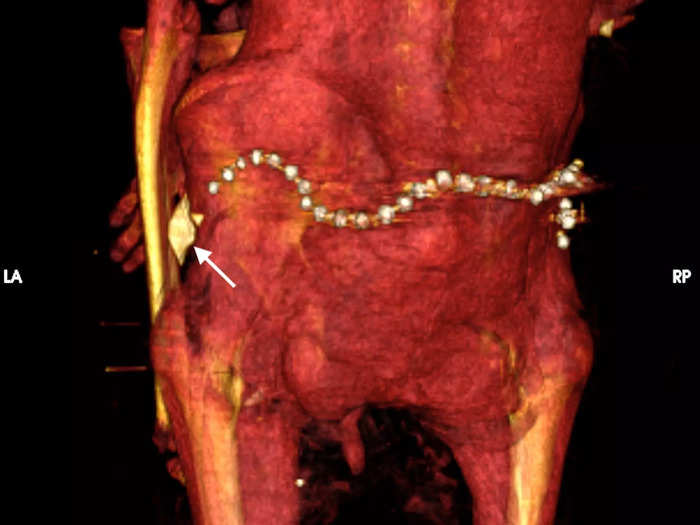
Amenhotep I's remains are a rare example of a royal mummy that wasn't pulled apart by early researchers.
"We really lost a lot of information from such quick unwrapping without any decent recording," said Ejsmond.
"Sometimes they had inscriptions on bandages, there are some amulets found along the way, some different things might be found. We know nothing about this," he said.
This scan revealed rare examples of jewelry still in place: about 50 amulets, and a gold chain around the pharaoh's waist, as seen above.
Amenhotep I died mysteriously young.
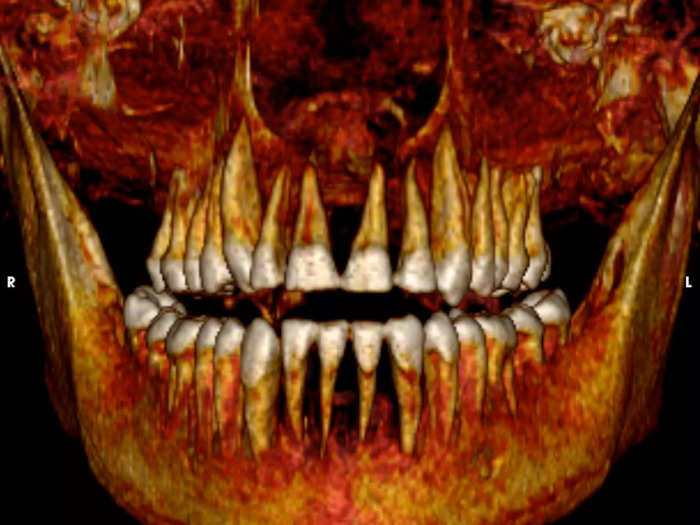
The scan revealed Amenhotep I died suspiciously young, at the age of 35. But there's no sign of any kind of physical illness on his remains: his teeth were in good health and he had no apparent injuries.
"As far as we know nothing wrong about his health was detected. So it's surprising that he died at such a young age," said Ejsmond.
A male priest was found to be a woman...
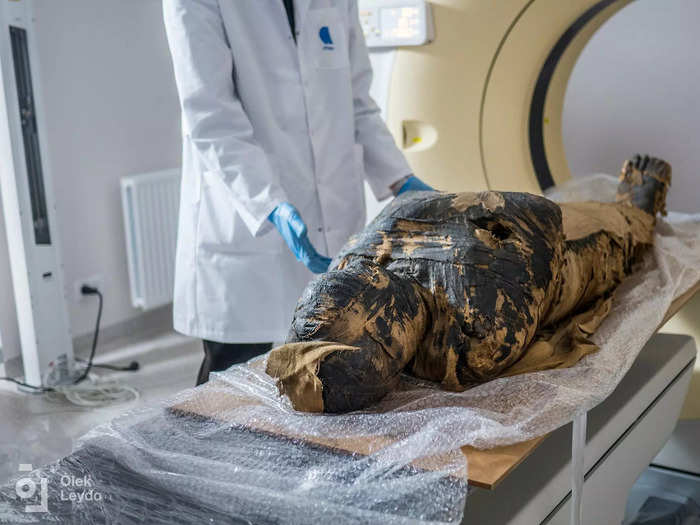
For centuries, scientists thought this mummy was of a man. Its sarcophagus said it was the remains of Hor-Djehuty, a male priest who lived between 100 BC and 100 AD
But a study published in April 2021 revealed that not only did this person not have a penis, the remains also had traces of breast tissue, indicating it was a mummy of an unnamed woman.
...who was likely pregnant.
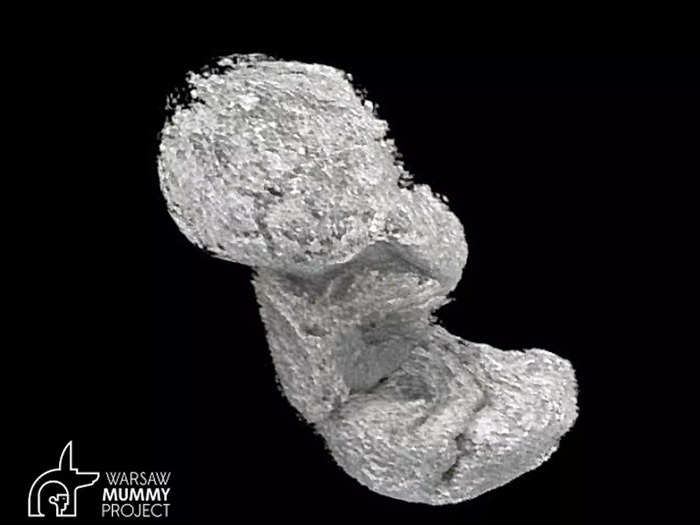
Even more bizarrely, scientists found a structure inside the woman's abdomen.
Their diagnosis: the woman was pregnant, the first example of a pregnant mummy ever found.
"When we saw the little foot and then the little hand [of the fetus], we were really shocked," Marzena Ozarek-Szilke, an anthropologist and archaeologist of the University of Warsaw, told the Associated Press at the time.
Scientists believe the fetus may have been 'pickled' like an egg, dissolving its bones.
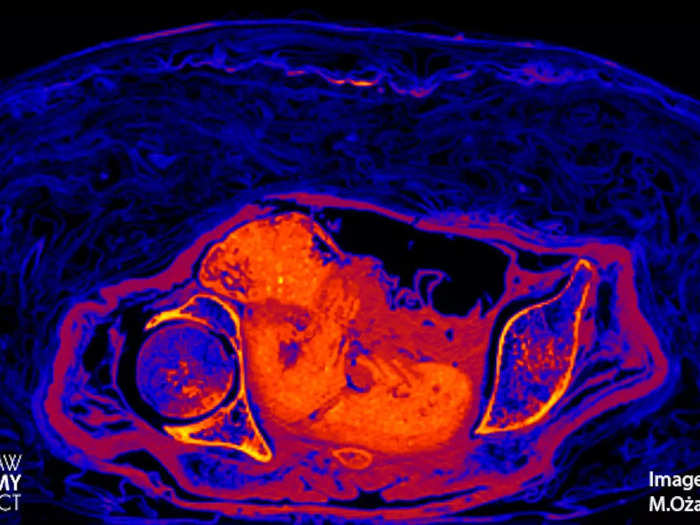
What was even weirder was that the fetus' bones had not showed up on previous X-rays of the mummy.
Ejsmond and his colleagues, who were involved in the study, have a hypothesis: the embalming fluids "pickled" the fetus and dissolved its bones, so they didn't show up on a normal scan.
"Radiologists were looking for bones, and our case shows that, actually, you shouldn't. You should look for the soft tissue with a unique shape," Ejsmond previously told Insider.
It's possible to recreate a dead priest's voice 3,000 years after his death.
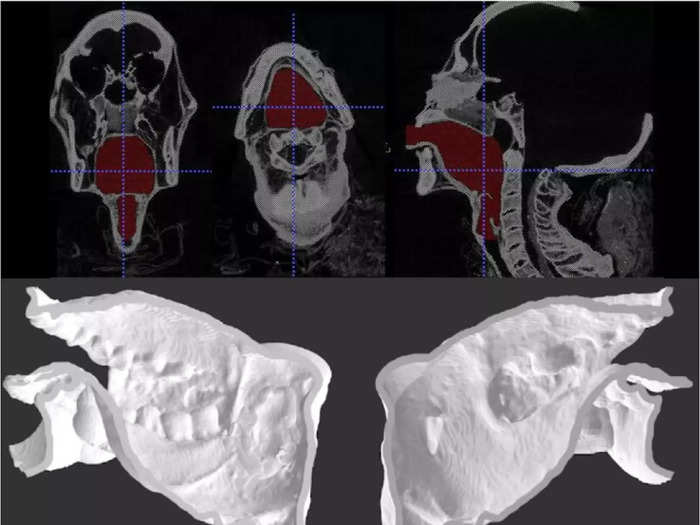
3D CT scanning allowed an Egyptian priest to speak 3,000 years after he died — or at least grunt.
Egyptian priest Nesyamun died around 1,100 BC and his throat and mouth were remarkably well preserved. Scientists were able to create the sound using a 3D printed mold of his vocal tract (you can hear it here).
Scientists have questioned whether this would really sound like him, but the technical feat was surprising, Ejsmond said.
"When you are researching mummies, you are never thinking about how the voice sounds like, and now apparently it's possible to reconstruct it," said Ejsmond.
Egyptians may have treated flesh wounds with bandages.
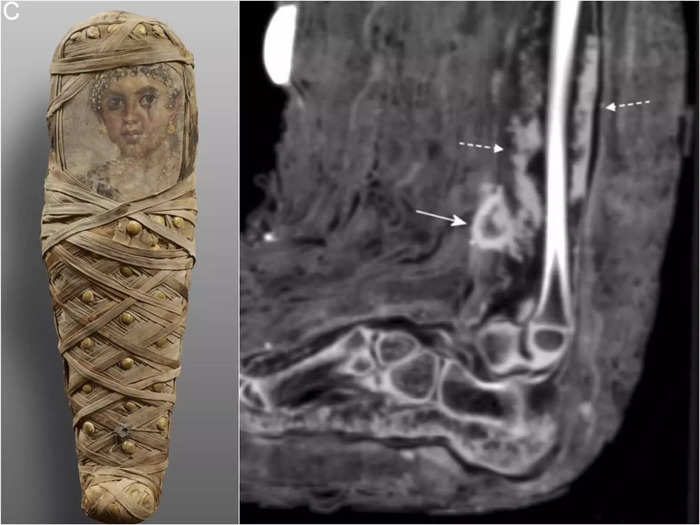
A wrapping on a child mummy's foot provided a rare clue into ancient medical practices.
A study published in January described wrappings on the foot of a young girl who died about 2,000 years ago.
The foot clearly showed dressing wrapped around what looked like an infected wound, providing the first evidence that Ancient Egyptians have more extensive knowledge of treating wounds than previously thought, Insider previously reported.
This dressing could easily have been missed, or mistaken for embalming bandages, had the mummy been unwrapped.
"It was really exciting because we didn't expect it," Egyptologist and study author Albert Zink, told Insider at the time. "It was never described before."
Scanning revealed the cause of death of a mummified snake.
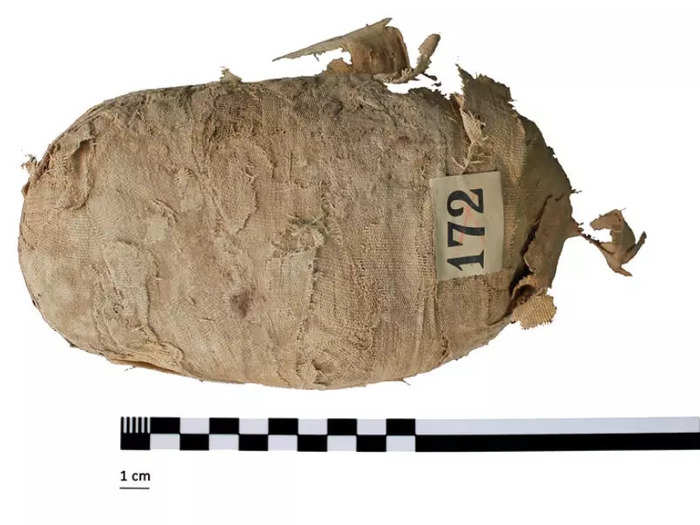
As many as 70 million animals were embalmed by Ancient Egyptians over the years, Insider previously reported.
A 2020 study peered into the mummy of a snake and a cat from the collection of the Egypt Center at Swansea University in the UK.
It showed Egyptians likely held the snake 'like a bull whip.'
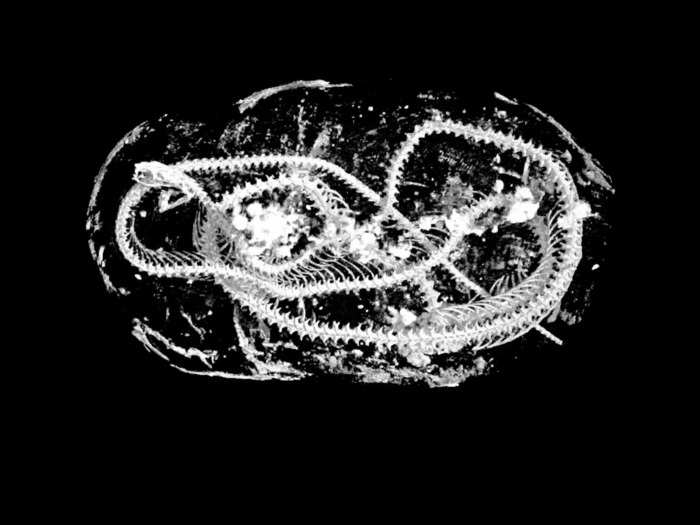
The study revealed the remains of a juvenile Egyptian cobra that was likely killed after being whipped against the floor.
"They used the snake like a bull whip," Rich Johnston, the lead author of the study, previously told Insider.
The snake's mouth was pried open, likely as part of a ritual ceremony
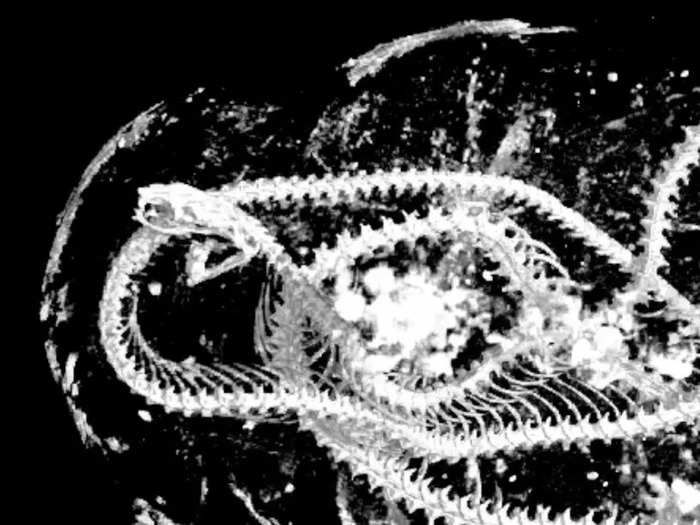
It also showed the snake's throat was filled with a type of resin called natron.
This means the embalmer may have chosen to do an "Opening of the Mouth" ceremony — a burial ritual meant to allow a mummy to eat, breathe, and enjoy offerings in the afterlife, Insider's Aylin Woodward previously reported.
Scientists also scanned a mummified cat...
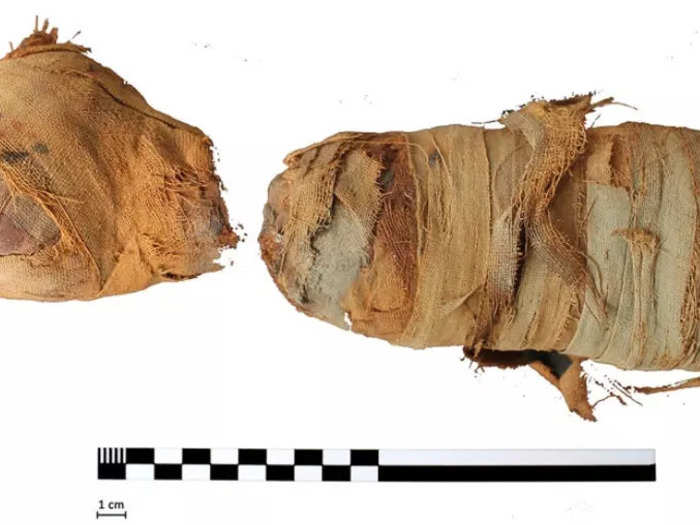
... that was possibly strangled.
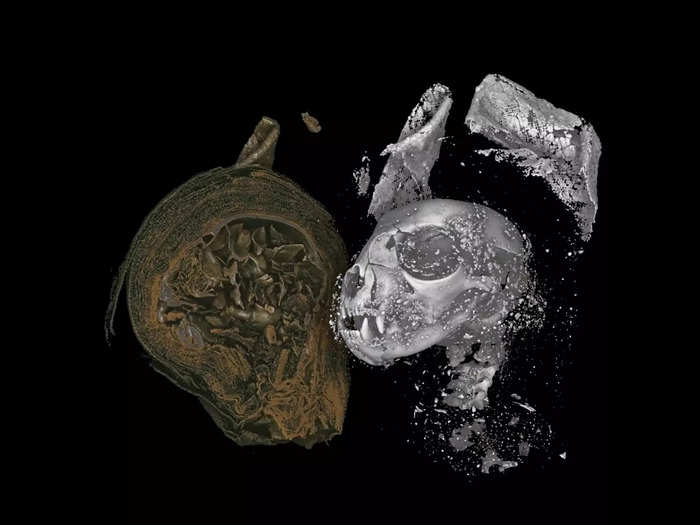
Analysis of the cat's teeth suggested he was barely older than a kitten, about 5 months old. The cat's neck bones were violently separated, so either it was strangled before death or its neck broken post-mortem, per the study.
Egyptology has come a long way from Victorian mummy-unwrapping parties.
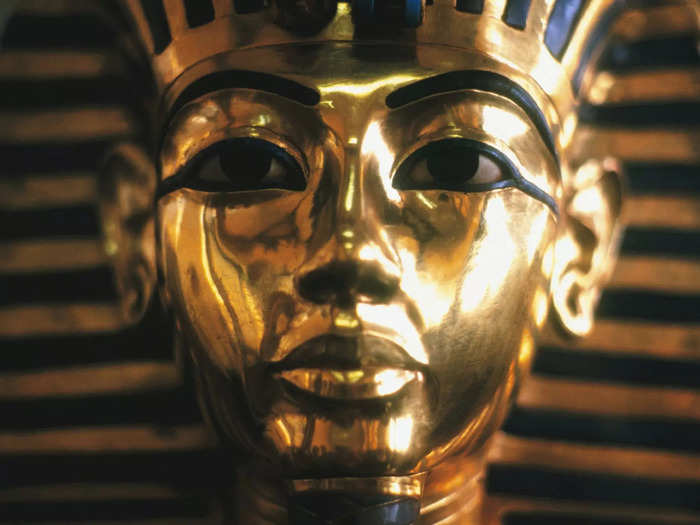
Ejsmond cringed when recalling the way mummified remains used to be treated.
This explains in part why the remains of King Tutankhamun, a Pharoah of the 18th dynasty buried with the famous golden mask pictured above, are in such poor shape today.
After uncovering the remains in the 1920s, the Egyptologists were so frustrated at not being able to unstick the mummy from the bottom of the coffin that they sawed him in half and chiseled his remains out.
Victorian Egyptologists would host public unwrapping parties that were thought to be the height of sophistication.
They were disastrous for the remains, exposing them to air and humidity that can do irreparable damage.
Some royal mummies were unveiled by running a knife straight from their head to their toes, with little care.
"It took them like 15 minutes or 10 minutes to unwrap a mummy fully," he said.
Scientists at the time did not keep precise records, and a lot of valuable information has been lost over time.
"CT scanning and X-rays are the basic ways of searching mummies nowadays because you cannot unwrap mummies in museums," Ejsmond said.
Popular Right Now
Popular Keywords
Advertisement